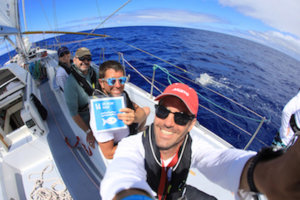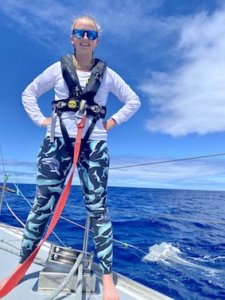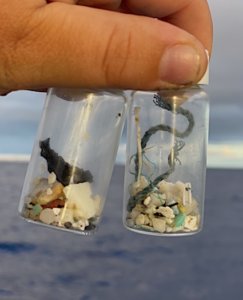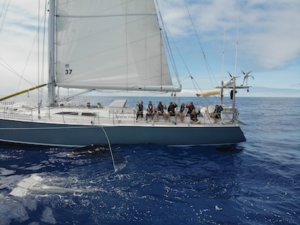
The ocean is the largest ecosystem on Earth and is central to the survival of both humankind and nature, and yet it is massively under threat. What is Pangaea Exploration and Sea Dragon doing about it? On June 8th, which happened to be The United Nations World Oceans Day, the crew of Sea Dragon found themselves in the vortex of plastics commonly called The Great Pacific Garbage Patch, ready to perform a series of Manta Trawls to collect, analyze, and record some of the macro and microplastics that skim the surface of our oceans. With two million pieces of plastics per square mile littering and literally choking our oceans, it hardly seems like the crew can scratch the surface and make a difference, but as was discussed at the launch of the First International Conference of the United Nations Decade of Ocean Science for Sustainable Development on June 1st this year, every initiative, project, discussion, awareness campaign, and effort matters and that action needs to come NOW!


So on June 8th and 9th, near the coordinates 33 20.1578N 154 15.5463W in the Pacific Ocean, the crew of eight on Sea Dragon released the manta trawl six times into the ocean to collect whatever entered its mouth over the course of 30 minutes. The manta trawl is a collection system, with a main body that looks like a manta ray, with aluminum wings and rectangular mouth. Ropes and lines help balance it over a boom that hangs off the side of the boat so consistent, clean samples can be taken away from the hull and the wake of the boat. A mesh collection net of less than 1mm is attached behind the mouth of the trawl to collect the microplastics. Once the mess bag is removed, the sample is cleaned with fresh water and the crew begins the tedious task of separating the organic from the inorganic debris and finally separating the inorganic plastics into categories. Anything larger than 5mm is set aside. The plastics that are less than 5mm are then identified as fragments, pellets, lines, thin film, and foam. In the six trawls the crew tallied a total of 1036 pieces of plastic, 63 greater than 5mm and 973 less than 5mm.
As we collected and analyzed the data, as well as stared out into the vast Pacific Ocean on the course of our sail to Ensenada, Mexico, we watched plastic floating by at an alarming rate of approximately three large pieces per minute (buoys, crates, buckets, ghost nets, flip-flops, toothbrushes,….). Considering the smaller fragments of plastic are being ingested by Phytoplankton and Zooplankton and humans eat fish that are eating the plankton, then by default the human species is ingesting a toxic plastic soup in our oceans and seas.

As we watch the majestic Albatross soar in the winds above the waves, searching for food for their young back on land, it becomes even more pressing to engage in the Decade of Ocean Science campaign, to prevent the life on land and under water from becoming extinct and to work together towards a clean ocean, a healthy and resilient ocean, a predicted ocean, a safe ocean, an accessible ocean, and inspiring and engaging ocean.
-Andrew





















